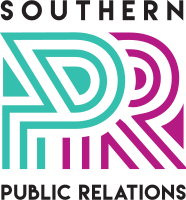TOP MEDIA TRAINING TIPS
By Fiona Woodham
Business leaders right now are finding themselves in the spotlight, often (especially if they’re in tourism) in the tricky position of having to rationalise or justify business closures or staff redundancies.
If they’re a business entrepreneur, start-up or have successfully ‘pivoted’ their business to provide goods or services that people need or want right now, it’s a golden opportunity to build or enhance their personal or business brand.
The team at Southern PR’s known for its comprehensive Media Training, based on over 25 years in the PR industry in NZ and over a decade in journalism for national UK & NZ newspapers.
So – media interviews can be intense. But if you’re prepared, keep calm and have some key ‘pivot’ techniques in your pocket, you’ll be ready for whatever comes your way.
- DO YOUR HOMEWORK – Know what you want to say, why and how. Work out your key messages, and practice saying them out loud. Believe me, it helps.
- RELAX – Take a deep breath, drink a glass of water before you start. Think about what you’re wearing, how you look, and what’s in the background. Put your best face forward.
- THINK BEFORE YOU SPEAK – Don’t be rushed, take a second to pause before answering a question. Keep responses short, on topic and you’re less likely to get ‘lost’ (and lose your listener in the process). Talk in soundbites.
- TALK LIKE A POLITICIAN – Hmmm, maybe some more than others! If you’re asked a question that’s going off topic, is challenging, or going down a route you don’t want to go down, use the bridging technique. For example: “I don’t have those specific details, what I can say is…” and get back on message.
- CORRECT YOURSELF – Sometimes something comes out of your mouth and you know straight away it’s not right. Never be afraid to say “I’m sorry, can I correct that?”
- CORRECT THE INTERVIEWER – if they get something wrong, be firm but clear. Use a bridging technique to get back on message such as: “That’s not correct, the facts are…”
- DON’T REPEAT NEGATIVES – a common enough mistake. For example, if a question asks if your company is lying, don’t repeat the word “lying” in your response unless you want it to be part of your soundbite. Start with: “The facts are…” then transition to your message.
- HIGHLIGHT YOUR KEY MESSAGE – literally. You get full attention when you say something like “The key thing here is…”
- SPEAK UP AND SHUT UP – Do not, what ever you do, fill in the silence between questions. Invariably this will end up being the headline, the moment at which you lost the plot and said something that wandered off topic. Answer the question, keep on message, wait for the next question. Easy.
If you’d like to know more or enquire about full media training and PR services, email [email protected]


